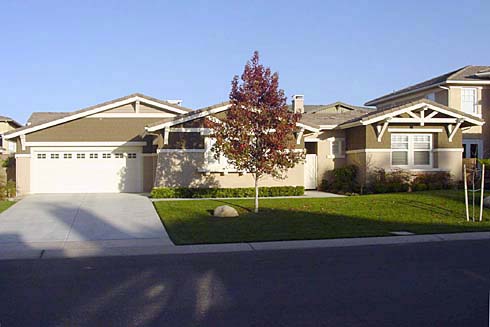FUTURE ADVANCES
Understanding Future Advances in Real Estate
When it comes to real estate financing, the concept of future advances plays a significant role, particularly in scenarios such as construction loans. Future advances refer to funds loaned by a mortgagee to a mortgager after the mortgage has been placed on the property and secured by the original security agreement. In the context of a construction loan, future advances involve the disbursement of funds to the developer as various stages of construction are completed [3].
Role in Construction Loans
How It Works
Disbursement Process:
In the case of a construction loan, future advances are disbursed to the developer through a series of draws or installments as different phases of construction are accomplished. This progressive disbursement allows the developer to access funds at crucial stages of the construction process, aligning with the evolving financial needs of the project.
Payment Structure:
Typically, these loans involve a short repayment term during the construction period, with the borrower making interest payments only. Following the completion of construction, the loan may either convert into a permanent mortgage or require a new loan to pay off the balance [3].
Benefits and Drawbacks
Pros
Flexible Funding:
Future advances provide flexibility in funding, especially for new-construction homes, as the disbursement of funds aligns with the financial requirements of distinct phases of the project [2].
Optimized Financing:
For developers, the availability of future advances facilitates effective cash flow management during the construction process, reducing the need for additional financing and potentially saving on interest costs [2].
Optimized Financing:
For developers, the availability of future advances facilitates effective cash flow management during the construction process, reducing the need for additional financing and potentially saving on interest costs [2].
Cons
Complexity:
Future-advance mortgages, including construction loans, can be more complex and challenging to understand compared to traditional mortgages, necessitating careful consideration of the terms and conditions [2].
Collateral Risks:
In the case of home equity loans and lines of credit, the borrower's property serves as collateral, posing the risk of foreclosure if payment obligations are not met [2].
Types of Construction Loans
In the realm of construction financing, various types of loans are available, each catering to specific needs and circumstances. These include construction-to-permanent loans, construction-only loans, owner-builder loans, and renovation loans, each designed to address different aspects of the construction process [3].
Understanding the dynamics of future advances in real estate financing, particularly within the context of construction loans, is crucial for developers, homeowners, and investors. By grasping the role, benefits, and considerations associated with future advances, stakeholders can make informed decisions and effectively manage the financial aspects of real estate development.
In essence, future advances offer a strategic approach to financing construction projects, enabling tailored disbursements based on the evolving needs of the development process. As the real estate landscape continues to evolve, the understanding of future advances remains integral to successful property development and investment decisions.
MORE REAL ESTATE TERMS
A, B, C, D, E, F, G, H, I, J, K, L, M, N, O, P, Q, R, S, T, U, V, W, X, Y, Z
Featured New Home

Featured Mortgage Brokers
- FIRST HERITAGE FINANCIAL, LLC, TREVOSE, PA
2655 NESHAMINY INTERPLEX DR
TREVOSE, PA 19053 - AMERICAN NATIONWIDE MORTGAGE COMPANY INC, LITTLE RIVER, SC
2220 HIGHWAY 17
LITTLE RIVER, SC 29566 - PINNACLE CAPITAL MORTGAGE CORPORATION, BELLEVUE, WA
2800 NORTHUP WAY STE 220
BELLEVUE, WA 98004 - PRIMELENDING A PLAINSCAPITAL COMPANY, NORTH SYRACUSE, NY
6702 BUCKLEY RD STE 140
NORTH SYRACUSE, NY 13212 - AMERICAN FINANCIAL NETWORK INC, MURRIETA, CA
24910 WASHINGTON AVE
MURRIETA, CA 92562